Disclosure: This article contains affiliate links. We may earn a commission from purchases at no extra cost to you, which helps our travel content.
The rhythmic clickety-clack of train wheels against aging tracks has become my meditation soundtrack across four continents. But there's something uniquely soulful about Bulgaria's railway system – particularly the route that connects cosmopolitan Sofia to the time-capsule village of Koprivshtitsa nestled in the Sredna Gora mountains. After three visits to this Balkan gem, I've mastered the art of navigating Bulgaria's charmingly unpredictable rural transport network. What appears straightforward on paper becomes a beautiful exercise in patience, cultural immersion, and unexpected friendship. This guide isn't just about getting from point A to B – it's about embracing the journey as a window into Bulgarian life that most tourists miss while speeding between Instagram hotspots. Pack your sense of adventure (and maybe a few snacks) as I break down everything you need to know about making this journey like a local, without breaking the bank.
Understanding Your Options: Train, Bus or Shared Taxi
Bulgaria offers three distinct flavors of rural transportation, each with its own rhythm and character. The train experience feels like time travel – not just in destination but in the actual carriages themselves. Bulgarian State Railways (BDZ) operates several daily services from Sofia to Koprivshtitsa, taking roughly 2.5 hours through mountain landscapes that will have you pressing your face against windows like an excited child. The second-class tickets cost around 8-10 leva (€4-5), while first-class will set you back just a few leva more for slightly cushier seats.
Buses represent the middle ground – more reliable scheduling than trains but less character. The central bus station in Sofia (next to the train station) offers services that take approximately 2 hours, costing 10-12 leva. The catch? These buses often drop you at Koprivshtitsa's main road junction, requiring a 2km uphill walk to the actual town.
For those with flexible budgets, shared taxis (marshrutkas) offer the fastest option. These minivans depart when full from a designated area near Sofia's central bus station. At around 15-18 leva per person, they're pricier but deliver you directly to Koprivshtitsa's center in about 1.5 hours.
During my spring visit last year, I opted for the train, carrying my travel backpack loaded with running gear. The rhythmic journey through blooming mountain meadows became an unexpected highlight, especially when sharing a compartment with a grandmother who insisted I try her homemade banitsa pastry while teaching me Bulgarian phrases I still use today.
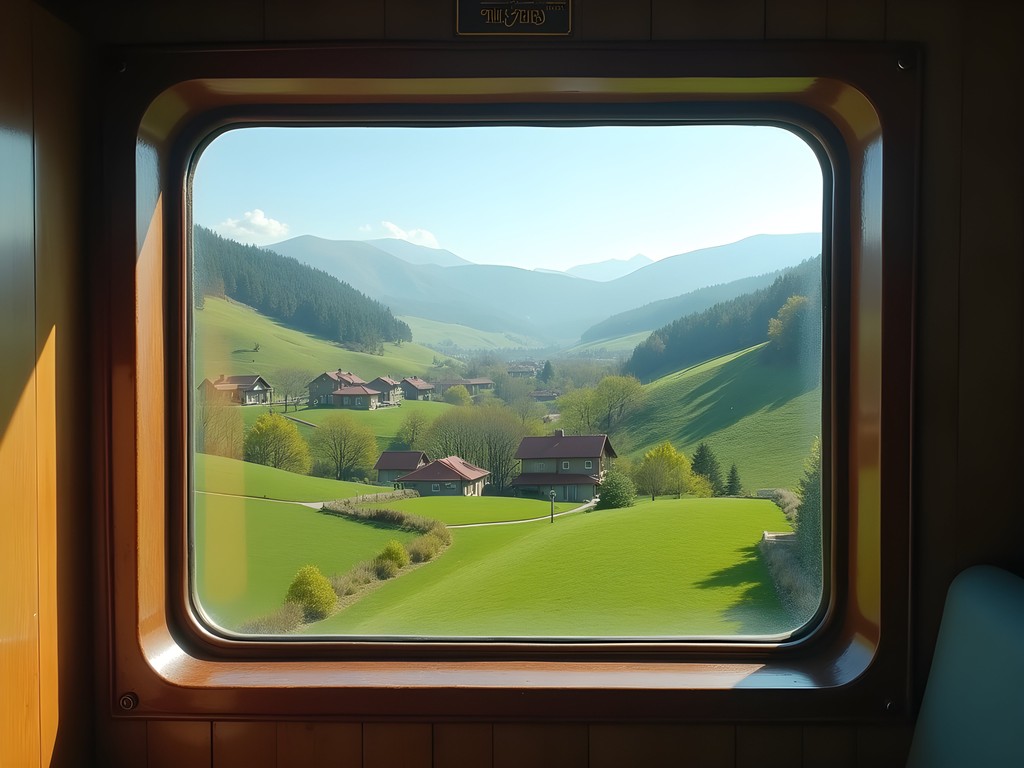
💡 Pro Tips
- Download the BDZ mobile app for real-time train schedules and occasional disruptions
- Trains often have more space for luggage than buses – ideal if you're carrying running gear
- Buy tickets at least 30 minutes before departure as lines can form unexpectedly
Navigating Sofia's Central Station Like a Pro
Sofia's Central Railway Station (Централна гара София) is where your journey begins, and it deserves some strategic navigation. Recently renovated but still maintaining that distinct Eastern European transport hub energy, this station can initially overwhelm first-timers. Located just north of the city center, it's easily reached by metro lines 2 and 4, with the stop literally called 'Central Railway Station.'
The station operates from 4:30am until midnight, with the ticket offices (КАСИ/KASI) located on the ground floor. Don't be intimidated by the Cyrillic signage – most ticket agents speak basic English, and I've found that pointing at destinations on your phone screen works wonders. Always carry cash (leva) as card payments can be temperamental at best.
What surprised me during my first visit was the station's mall-like quality – a personal fascination of mine. Between the upper and lower levels, you'll find cafes, small shops selling everything from Bulgarian pastries to SIM cards, and even a surprisingly decent record shop tucked away near platform 5 where I scored a rare Bulgarian folk vinyl.
Before boarding, I recommend grabbing supplies at the small grocery store near the main hall. Long train journeys become infinitely more enjoyable with local snacks and a bottle of water. My go-to travel companion is always my trusty water bottle which keeps drinks cold for the entire journey even when the train heating gets overzealous (which it will).
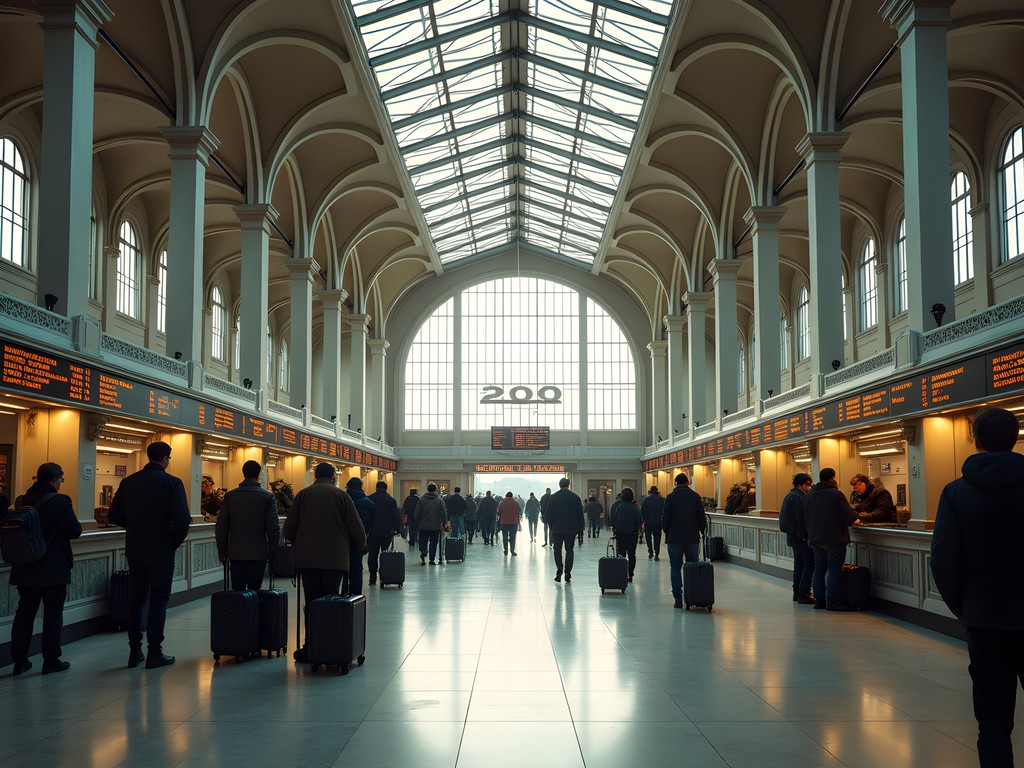
💡 Pro Tips
- Arrive at least 45 minutes early to navigate ticket purchases and potential language barriers
- Platform numbers often change last-minute – confirm your train's platform on the electronic boards
- Use the bathroom BEFORE boarding as train facilities range from basic to non-existent
The Train Journey: What to Expect
The train ride from Sofia to Koprivshtitsa offers a cinematic introduction to Bulgaria's countryside that no highway journey can match. These trains aren't luxury expresses – they're living museums of transportation with character etched into every squeaking door and worn seat. The second-class carriages typically feature compartments of 6-8 seats facing each other, creating natural conversation spaces with fellow travelers.
As the train pulls away from Sofia's urban sprawl, the transformation begins. Soviet-era apartment blocks give way to small villages, then gradually to the undulating foothills of the Sredna Gora mountains. In spring, these hills explode with wildflowers – purple carpets of wild thyme and bright yellow rapeseed fields create a kaleidoscope effect that had me fumbling for my compact camera throughout the journey.
The train makes several stops at small stations where time seems suspended. Pirdop and Klisura are particularly charming – elderly vendors sometimes hop on briefly selling seasonal fruits or homemade treats. These impromptu markets-on-rails epitomize what I love about rural transport: authentic glimpses into local life that organized tours sanitize away.
One crucial note: the actual Koprivshtitsa train station is located about 8km from the historic town. Don't panic! When you arrive, you'll find minibuses synchronized with train arrivals that shuttle passengers to the town center for about 3 leva. Alternatively, shared taxis gather outside the station offering the same journey for 5 leva per person when full.
During my spring visit, our train arrived during a brief mountain shower. Rather than rush for transport, I sheltered in the tiny station building where the stationmaster – noticing my running shoes – enthusiastically mapped out local trails on a tattered tourism brochure, complete with elevation gains. These unplanned exchanges have become the heartbeat of my travel experiences.

💡 Pro Tips
- Download offline Google Maps of the area as cellular service can be spotty in the mountains
- Sit on the right side of the train when leaving Sofia for the best mountain views
- If no minibus appears at Koprivshtitsa station, find fellow passengers to share a taxi into town
The Bus Alternative: When and How
While trains hold a special place in my traveler's heart, Bulgaria's intercity buses offer distinct advantages worth considering. The Sofia-Koprivshtitsa bus route operates from Sofia's Central Bus Station (автогара София) located conveniently beside the railway station. These buses typically run 3-4 times daily during spring, with the first departure around 7:30am and the last at 4:00pm.
Unlike the train experience, buses deliver a more direct journey, usually completing the trip in about 2 hours flat. Tickets cost between 10-12 leva one-way, purchased either online through platforms like bgrazpisanie.com or directly at the station counter. I strongly recommend arriving 30 minutes before departure as these routes can fill quickly, especially on weekends when city dwellers escape to the mountains.
The buses themselves range from modern coaches with air conditioning and sometimes WiFi to more vintage models with character (and interesting suspension). Either way, they provide a comfortable enough experience for the relatively short journey. The real advantage comes in the drop-off location – while still about 1-2km from Koprivshtitsa's historic center, it's significantly closer than the distant train station.
During my second Bulgarian adventure, I opted for the bus return journey after heavy rains made the mountain train tracks subject to delays. The bus offered panoramic views through large windows that revealed a different perspective of the landscape. I spent the journey mapping my Koprivshtitsa running route on my running watch while chatting with a Bulgarian university student returning to Sofia after visiting family. Her insider tips led me to a monastery hidden in the hills that wasn't in any guidebook – a reminder that sometimes the best travel resources are your fellow passengers.
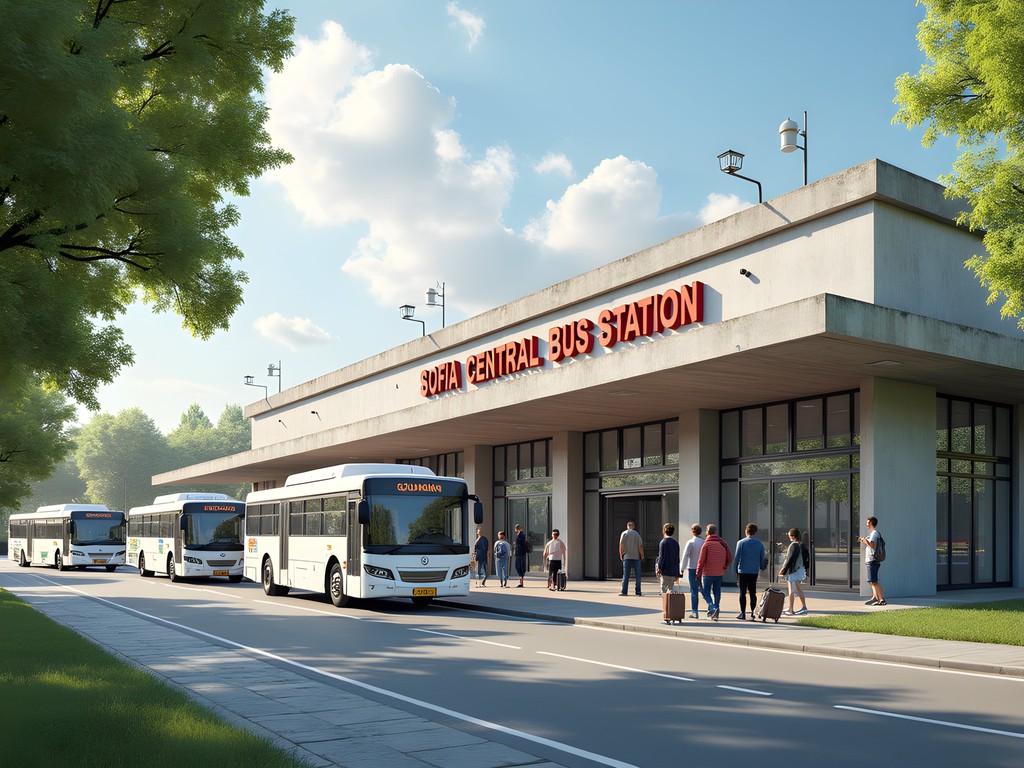
💡 Pro Tips
- Check bus schedules at the station upon arrival in Bulgaria as online timetables can be outdated
- Sit on the left side when leaving Sofia for best mountain views (opposite of train recommendation)
- Tell the driver 'Koprivshtitsa center' when boarding to ensure the correct drop-off point
Shared Taxis: The Flexible Option
For travelers seeking the sweet spot between cost, convenience, and an authentic slice of Bulgarian life, shared taxis (marshrutkas) offer an unbeatable transport option. These minivans operate on a 'leave when full' basis from a designated area near Sofia's Central Bus Station, typically from a small parking lot that locals can easily direct you toward.
The marshrutka experience begins with finding the right vehicle – look for minivans with 'Копривщица' (Koprivshtitsa) displayed in the windshield. Drivers typically wait until they have 7-8 passengers before departing, which could mean an immediate departure during busy periods or a wait of up to 30 minutes during quieter times. The fare hovers around 15-18 leva per person, paid directly to the driver in cash.
What makes these shared taxis special is their direct service to Koprivshtitsa's center, eliminating the need for secondary transport from remote stations. They also offer the fastest journey time at approximately 1.5 hours, traffic permitting. The trade-off comes in comfort – expect cozy seating arrangements and limited space for large luggage.
During my most recent Bulgarian adventure, I chose the marshrutka option for my outbound journey after meeting two fellow travelers at my hostel heading the same direction. The driver, a Koprivshtitsa native named Dimitar, transformed our journey into an impromptu cultural tour, pointing out landmarks and sharing local legends in broken but enthusiastic English. When he discovered my interest in monasteries, he made a brief detour to show us a small roadside chapel where local runners traditionally stop to light candles before competitions.
The shared taxi dropped us directly in Koprivshtitsa's central square, where my accommodation was just a five-minute walk away – a welcome relief after previous visits that required additional transportation from distant stations. For solo travelers especially, marshrutkas offer not just transportation but potential connections with both locals and fellow travelers that often evolve into dinner companions or hiking partners.

💡 Pro Tips
- Arrive early morning (around 8-9am) for the best chance of quick departures
- Keep small bills for payment as drivers rarely have change for large notes
- Exchange contact information with your driver for potential return journey arrangements
Getting Around Koprivshtitsa Once You've Arrived
Koprivshtitsa itself is a pedestrian's dream – a living museum where Bulgaria's National Revival architecture is preserved in colorful, wooden-beamed houses along cobblestone streets. The town is compact enough that once you've arrived, your feet become your primary mode of transportation. The historic center spans just about 1km in diameter, with most guesthouses, museums, and restaurants within a 10-15 minute walk of each other.
The town's layout follows the Topolnitsa River, with most attractions concentrated along or near the main pedestrian street. While the cobblestones add undeniable charm, they can challenge those with mobility issues or rolling luggage. My hiking shoes proved invaluable for navigating these uneven surfaces, especially after spring showers left some pathways slick.
For those staying outside the immediate center or planning to explore surrounding natural areas, limited local transport exists. A few local taxi drivers operate in town – your guesthouse host can typically arrange one with a phone call. Expect to pay around 10-15 leva for journeys within the wider Koprivshtitsa area. For runners like myself, the town offers spectacular trail access, with paths leading directly from the center into the surrounding Sredna Gora mountains.
During my stay, I discovered that Koprivshtitsa operates on a different rhythm than larger Bulgarian cities. Most museums and attractions close surprisingly early (around 5:00pm), while restaurants often stay open until the last customer leaves. The town square transforms throughout the day – from morning produce vendors to afternoon coffee-sippers to evening folk music performances during spring and summer months.
One morning, I rose before dawn to run the trail toward Klisura, another historic town about 12km away. The path took me past a small monastery where an elderly monk was tending a garden. Despite the language barrier, he invited me in for water and showed me their small chapel where resistance fighters had hidden during the April Uprising against Ottoman rule – the very event that made Koprivshtitsa famous in Bulgarian history. These unplanned encounters reveal the town's soul in ways that scheduled tours never could.

💡 Pro Tips
- Wear comfortable shoes with good traction for the cobblestone streets
- Carry a small flashlight if staying outside the center as street lighting is minimal
- Ask locals about seasonal festivals – many aren't advertised but offer authentic cultural experiences
Final Thoughts
The journey between Sofia and Koprivshtitsa represents everything I've come to love about Bulgarian travel – unpredictable yet rewarding, challenging yet accessible, and always rich with human connection. Whether you choose the meditative rhythm of the train, the efficiency of the bus, or the cultural immersion of a shared taxi, the transportation becomes part of the destination's story. As a budget traveler who values authentic experiences over convenience, I've found these rural transport networks offer windows into Bulgarian life that luxury travel simply cannot access. So embrace the occasional delay, strike up conversations with your fellow passengers, and remember that in Bulgaria, the journey itself offers as many stories as the destination. As the local saying goes, 'Бързата работа – срам за майстора' (Rushed work is the craftsman's shame) – sometimes slowing down is the greatest luxury of all.
✨ Key Takeaways
- Train journeys offer the most scenic route but require additional transport from Koprivshtitsa station
- Shared taxis (marshrutkas) provide the best balance of cost, convenience and authentic experience
- Spring visits offer the most beautiful landscapes and comfortable temperatures for exploration
- Always carry cash in leva for transport as card payments are rarely accepted
📋 Practical Information
Best Time to Visit
April to June (spring)
Budget Estimate
20-30 leva per day for transportation
Recommended Duration
3-5 days
Difficulty Level
Intermediate

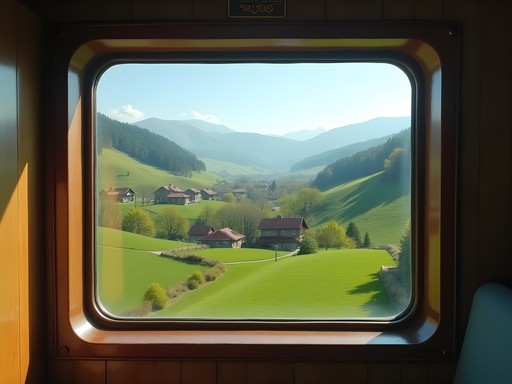
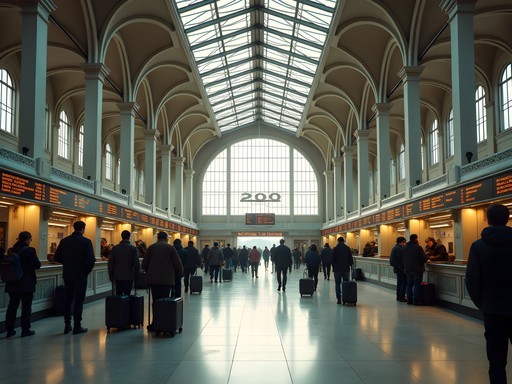
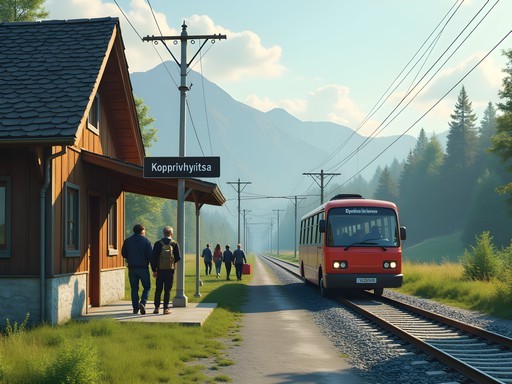

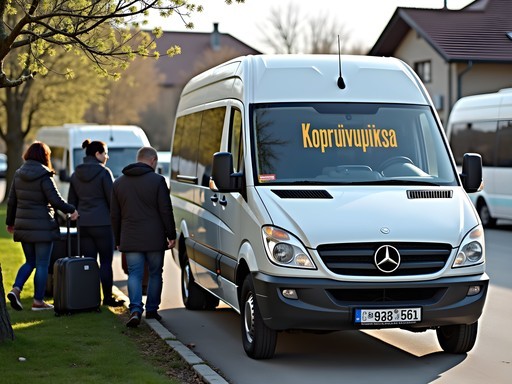
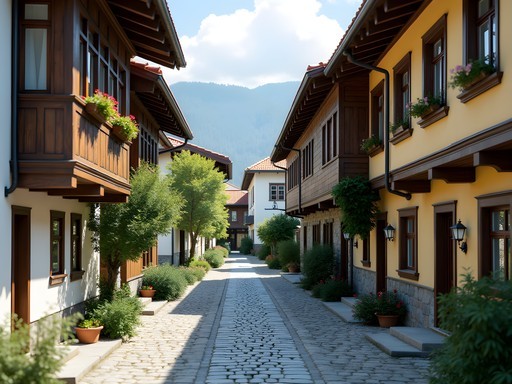










Comments
luckylover
Just booked our tickets for October! Your guide is a lifesaver, those station signs would have been impossible without your tips!
Jean Wells
Having done this journey several times over the years, I've noticed the morning trains tend to be more reliable than afternoon departures. The 7:30am train from Sofia usually runs closest to schedule. For anyone staying overnight, I recommend checking the return schedule carefully as Sunday service is limited. Mason's description of navigating Sofia Central Station is spot-on - those ticket windows can be intimidating! One correction though: as of last month, the bus terminal has moved about 200m further from the train station than shown in your photos.
Mason Sullivan
Thanks for the update about the bus terminal, Jean! Things change quickly there. And good point about the Sunday schedule - learned that one the hard way my first visit.
smartphotographer
Are there good photo spots along the train route? Going next month!
Mason Sullivan
About an hour in, there's a gorgeous valley with traditional villages. Sit on the right side (facing forward) for the best views!
smartphotographer
Perfect, thanks for the tip!
Bryce Diaz
Mason, this brought back memories! I took this journey in 2023 during a snowfall, and it was like traveling through a Bulgarian fairytale. One thing I'd add for readers - the shared taxis (marshrutkas) are faster but definitely not for the faint-hearted. Our driver treated mountain roads like a Formula 1 track! But if you're short on time, they'll get you there in half the train time. I always keep my pocket translator handy for these rural routes where English is limited. The station cafe in Koprivshtitsa makes incredible bean soup - perfect after that chilly platform wait!
luckylover
Omg the marshrutka drivers are WILD! Thought I was gonna die but made it in record time 😂
freevibes
Those wooden houses in your photos are stunning! Added to my bucket list.
oceanking
Just did this journey last month! The train was exactly as you described - charming but definitely on 'Bulgarian time' haha. We ended up making friends with an elderly couple who shared their homemade banitsa with us. One tip I'd add: download the Bulgarian train app before you go. The station signs can be hard to spot sometimes and the app helped us confirm which stop was ours!
Mason Sullivan
Great tip about the app! I should have mentioned that. Those unexpected moments of local hospitality make Bulgarian travel so special, don't they?
oceanking
Absolutely! The grandmother insisted we take extra for the journey back too. Made the delayed departure totally worth it!
BalkanExplorer
Love the photos in this post! That shot of the old station with the mountains in the background is stunning.
TravelTom42
Did this journey last week. Quick tip: the ticket office at Sofia station opened later than advertised, so give yourself extra time. And don't miss the little bakery at the far end of platform 1 - amazing banitsa for the journey!
dreamphotographer
Thanks for the banitsa tip! I'm definitely going to try that.
WanderlustWendy
Just booked my tickets after reading this! Can't wait to see those colorful houses in person.
BulgariaFan
Quick tip: if you're visiting Koprivshtitsa during a weekend in summer, book your return ticket as soon as you arrive! The trains fill up with locals returning to Sofia on Sunday evenings.
dreamvibes
Great advice! Would you recommend staying overnight or is it doable as a day trip?
BulgariaFan
Definitely stay overnight if you can! The town is magical in the evening when day-trippers leave, and the morning light on the buildings is perfect for photos.
Venture X
Premium card with 2X miles, $300 travel credit, Priority Pass